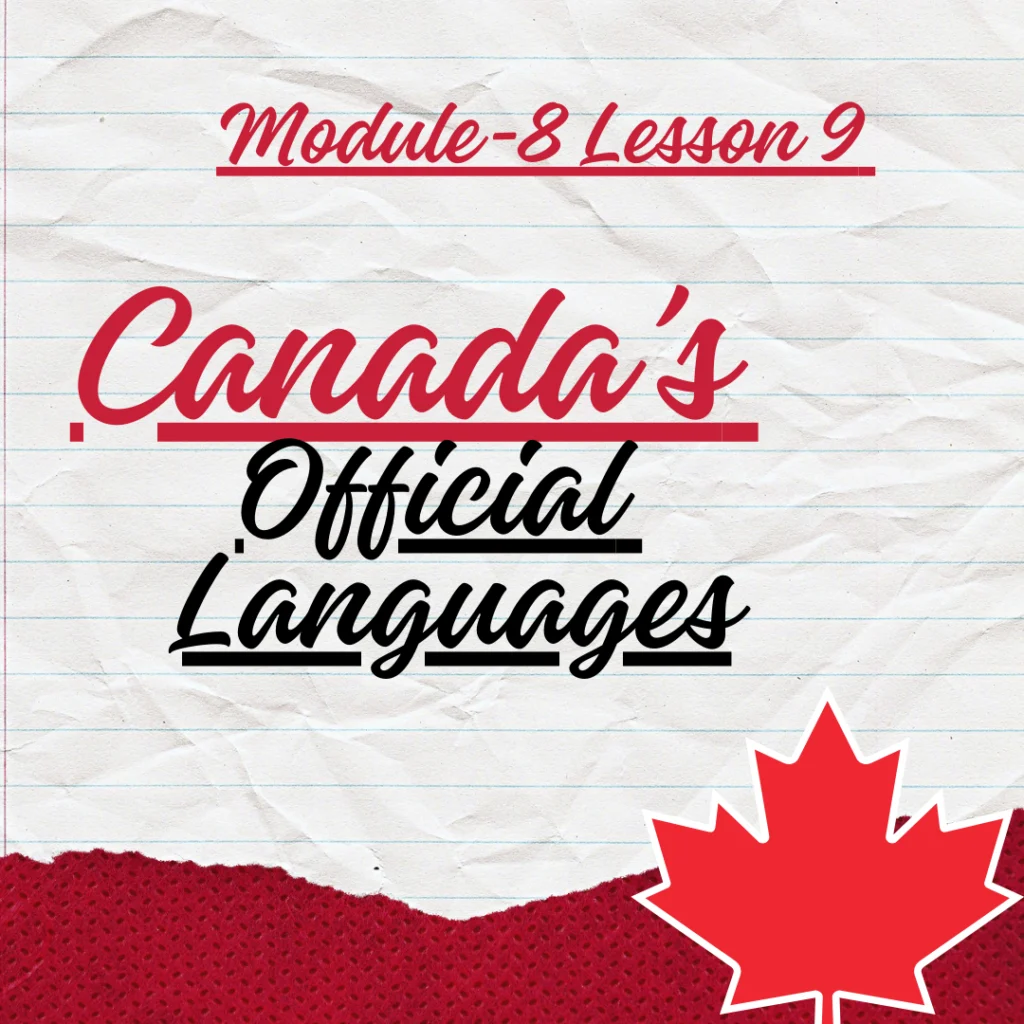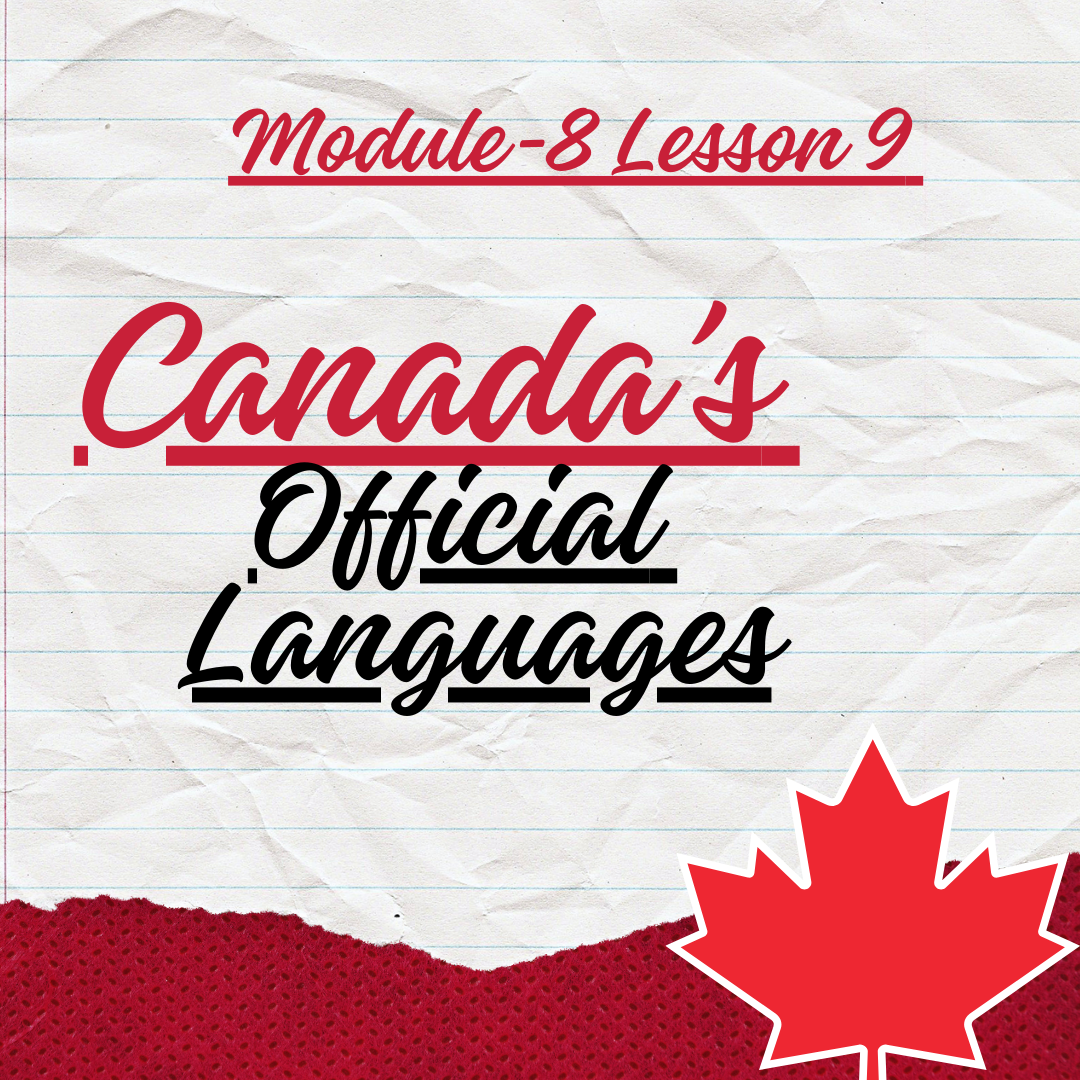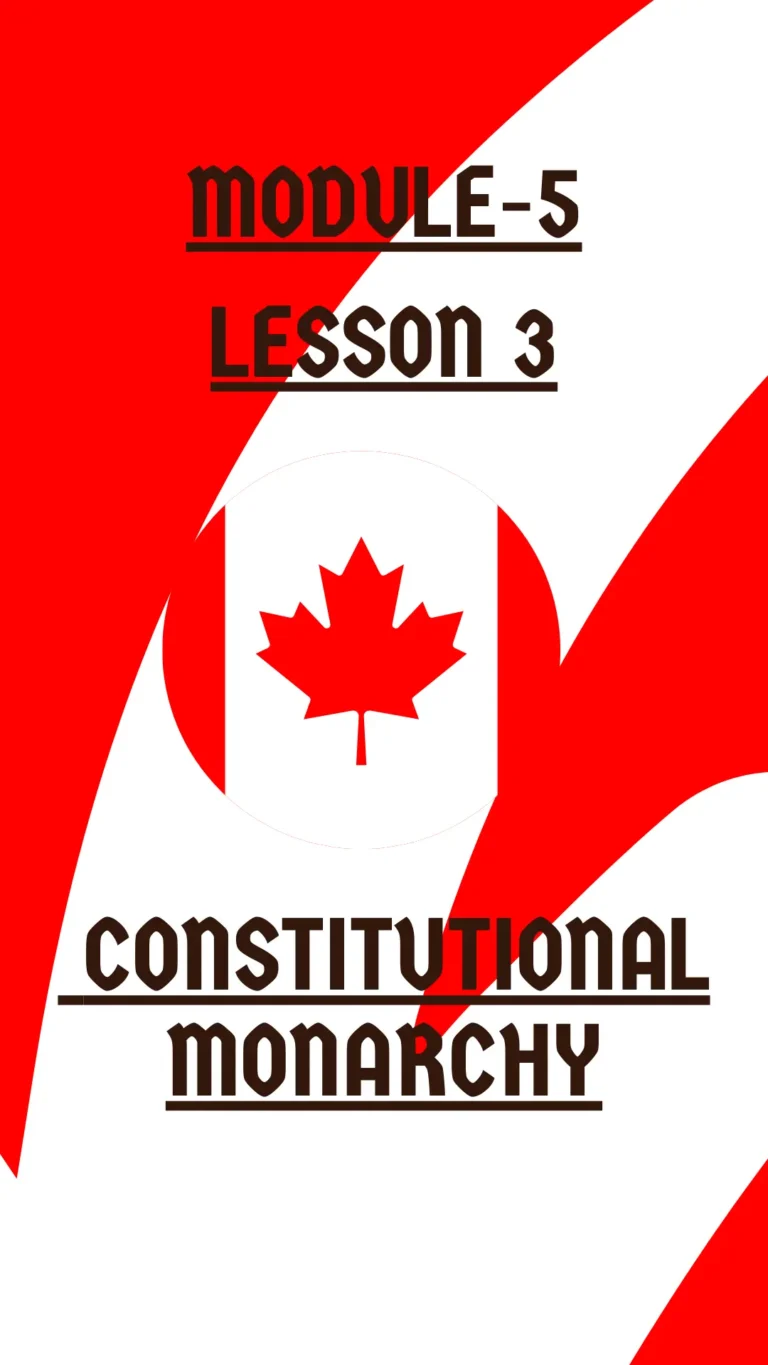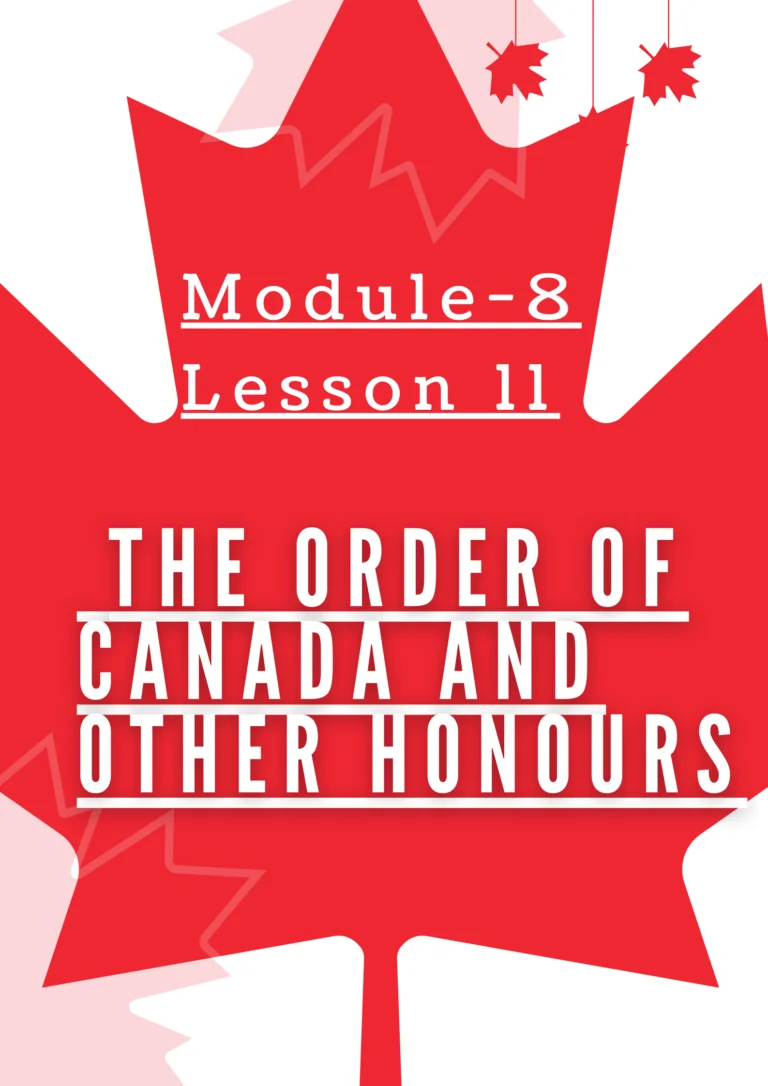Module-8 Lesson 9 Canada’s Official Languages
Canada recognizes English and French both as official languages .Canada is a country that celebrates its diversity in culture and its commitment to inclusion. The Canadian Charter of Rights and Freedoms reflects Canada’s efforts over the years to promote linguistic diversity and cultural heritage and create a feeling of unity in its citizens. This exploration of Canada’s official languages explores their legal framework and impact on national identity.
Historical roots: A tale of two colonies
The complex colonization history and settlement of Canada is the root cause for Canada’s dual linguistic heritage. Early in the 17th century European powers, including France and England sought to set up colonies on the New World. In 1608, the French founded Quebec, while England claimed Newfoundland. They later set up colonies in Nova Scotia and New Brunswick.
In 1763, the Treaty of Paris marked a major turning point in New France’s history. It transferred control to Britain. The linguistic landscape was profoundly affected by this event, with English-speaking settlers coexisting alongside the French-speaking populations in newly-acquired territories. In 1763, the Royal Proclamation recognized French Canadians’ rights to speak their own language and practice their religion.
Confederation and Language Rights : 1867 and beyond
The journey of Canada towards confederation, in 1867, brought together provinces that had distinct cultural and linguistic backgrounds. British North America Act was the document that laid the groundwork for Canadian Confederation. It did not address explicitly language rights. As provinces became part of the confederation, language rights began to become more important.
In 1870 the Manitoba Act, which was one of the first laws to explicitly address the rights of language, recognised both English and French in Manitoba’s legislature and courts as official languages. The Northwest Territories Act of1875 and other subsequent developments reinforced the bilingualism of the area.
In the Northwest Territories Act, it was stated that all documents and ordinances would be published in English as well as French. The legal system has evolved over the years to take into account the diversity in linguistics of Canadians.
Legal Framework for the Official Languages Act
Official Languages Act of 1969 is the primary legal document that governs Canada’s current official language framework. The Official Languages Act, enacted in 1969, was a landmark law that recognized linguistic equality. It also ensured that English and French would coexist side-by-side within federal institutions.
Official Languages Act: The Official Languages Act gave federal employees the freedom to choose their official language, offered services in English and French to the public, and encouraged the use of the two languages by federal institutions. The Act also created the Office of Commissioner of Official Languages (a independent Ombudsman who oversees the Act’s implementation).
In the years that followed, amendments were made to strengthen its provisions as well as extend language rights into other areas of Canadian culture. The Act, for example, was amended to acknowledge the equality of English in the Parliament of Canada and in federal institutions.
The Charter of Rights and Freedoms of Canada includes language rights.
Further solidifying language rights was the 1982 Constitution Act, which included the Canadian Charter of Rights and Freedoms. The Charter’s Section 16 explicitly declares that English and French are the official languages in Canada and New Brunswick.
The Charter’s sections 16-22 outline language rights. These include the right of use English and French before federal courts and New Brunswick judges, and the right to have federal statutes and New Brunswick regulations translated into both English and French.
Impact of Bilingualism on Education in the Country
In Canada, the commitment to bilingualism extends into education. French is the main language of instruction in regions where there are significant French-speaking communities, like Quebec and some parts of New Brunswick. In most provinces and territory, English is also the main language of instruction.
Canada’s language policies are designed to promote bilingualism throughout the country. This is because they recognize the importance of multilingualism, especially in today’s globalized society. French immersion programs have become popular, allowing English-speaking children to learn both languages.
Cultural Promotion: Supporting Francophone Communities
Canada’s commitment towards official bilingualism includes support of the vibrant Francophone community in addition to educational and legal considerations. The programs and initiatives are designed to celebrate and promote the French culture and language, and to ensure that both contribute to Canada’s rich heritage.
The cultural contribution of French-speaking Canadian communities is highlighted by events such as the National Acadian Day or the Journee De La Francophonie. In addition, the federal government supports programs that promote and preserve Francophone and Acadian cultural and linguistic vitality.
Bilingualism: An everyday Canadian reality
Canada’s official bi-lingualism extends beyond government and legal institutions. It is part of the fabric that is our daily lives. The government’s communications, product labels and public signs are available both in English and French. Institutions and services provided by the federal government are designed in both English and Spanish, demonstrating a commitment towards inclusivity and accessibility.
The daily use of French in regions where there is a large Francophone population, like parts of Quebec or New Brunswick, is an important part of the community’s life. The coexistence of these two languages is not without challenges. However, it also serves as proof that Canada has embraced and celebrated linguistic diversity.

Balance Act: Challenges and Criticism
Canada’s official bilingualism has been widely praised, but it also faces criticism and challenges. Critics claim that this policy is unfairly burdensome for certain institutions and regions, especially those with small Francophone populations. Costs of bilingual programs and services have been the subject of debates, including resource allocation and practicality.
There have also been conversations about the unequal distribution of French language services outside Quebec and New Brunswick. To address the disparities, there must be a constant dialogue as well as adjustments made to existing policies in order to provide fair treatment to both communities.






